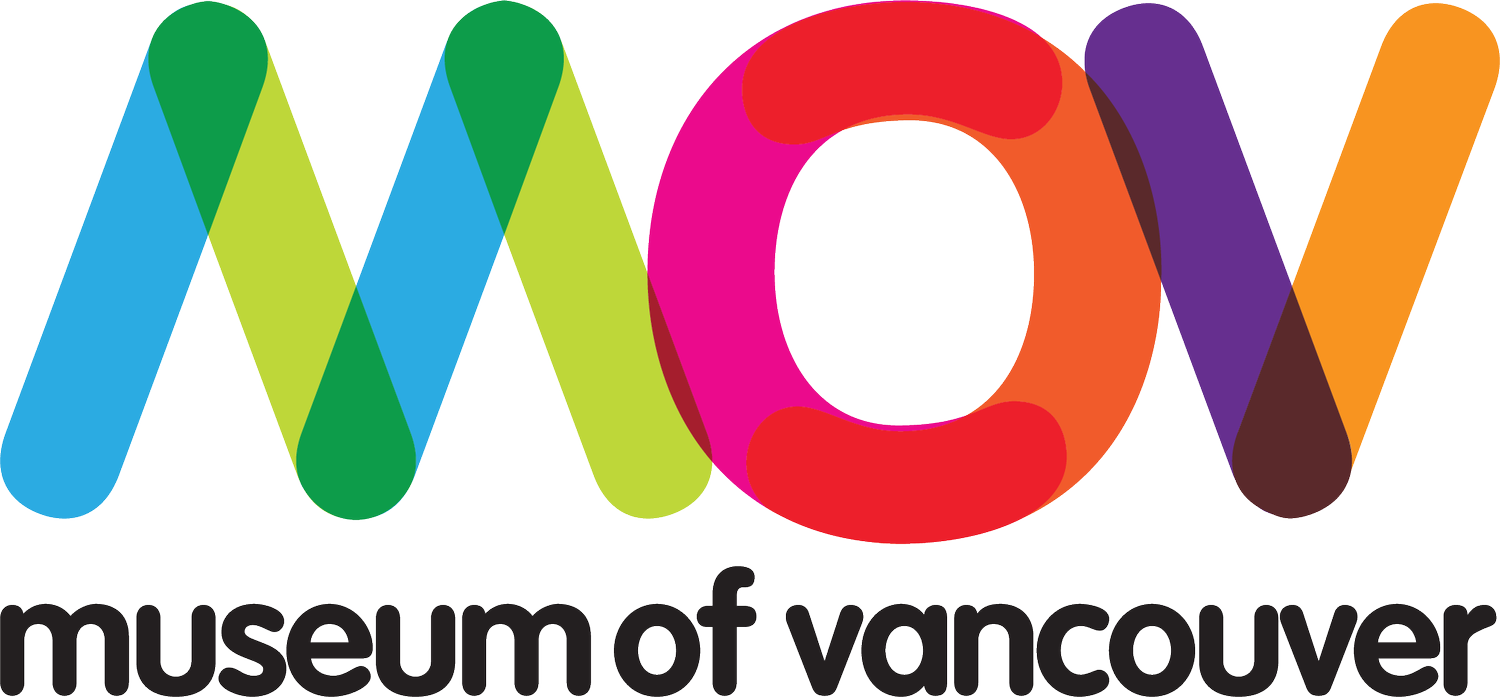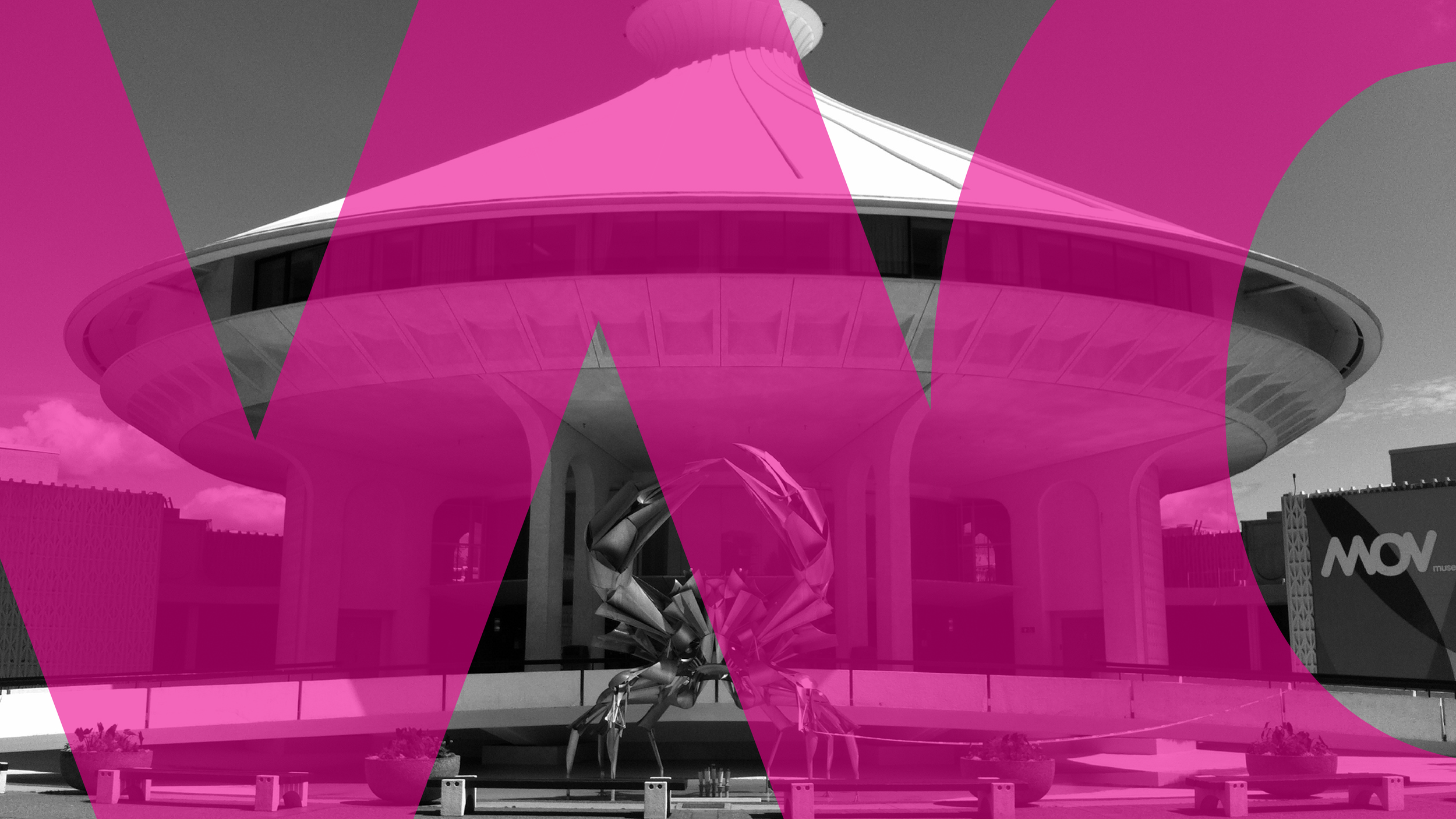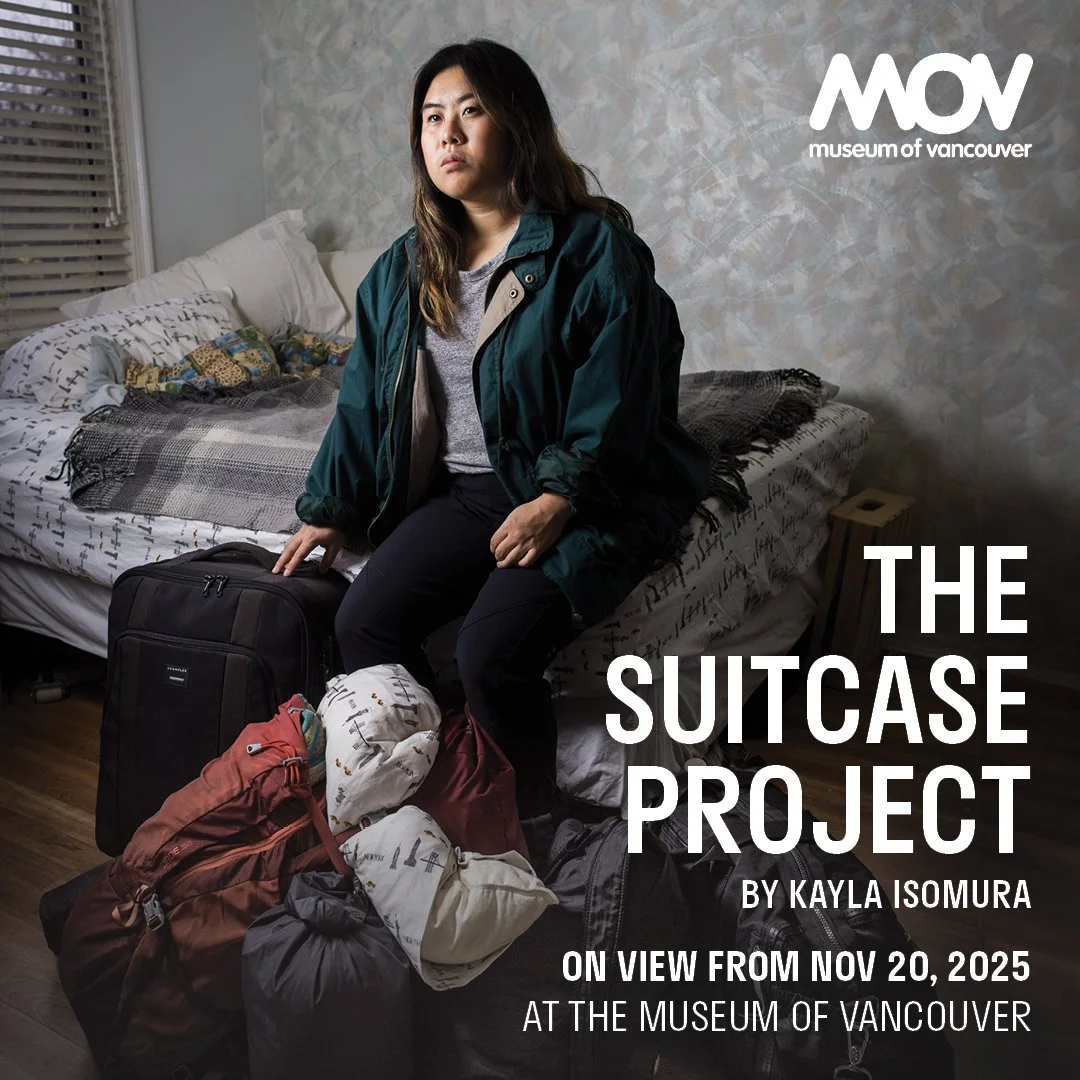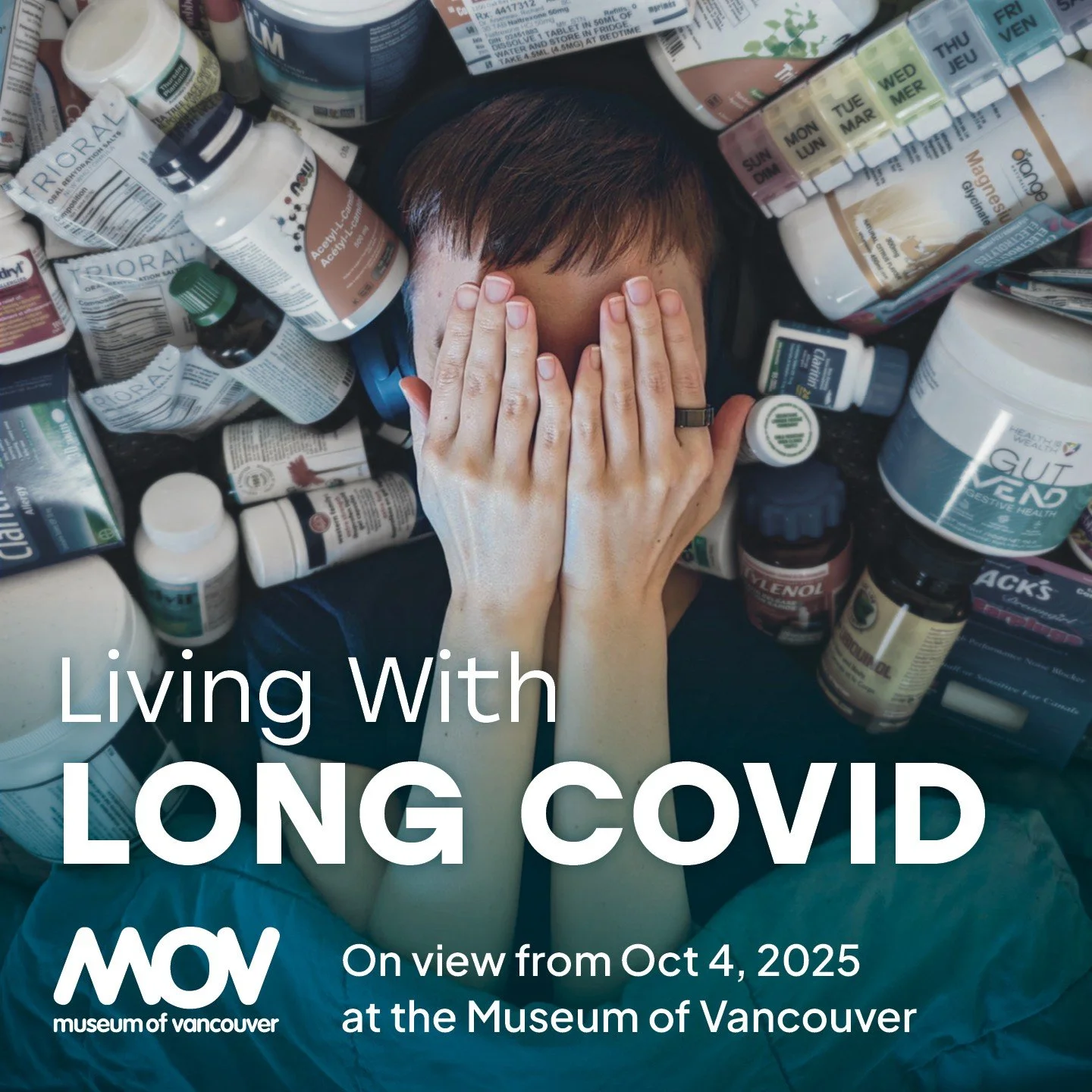The Suitcase Project
November 20, 2025 - November 8, 2026
What would you pack if you were forcibly removed from your home today? This is what photographer Kayla Isomura asked more than 80 fourth and fifth generation Japanese Canadians and Americans for her travelling exhibition, The Suitcase Project, which will be on view at the Museum of Vancouver starting November 20, 2025.
In 1942, approximately 23,000 Japanese Canadians and more than 100,000 Japanese Americans living on the west coast were uprooted from their homes and placed in internment camps or incarceration. Subjects for The Suitcase Project were given 24 to 48 hours’ notice to assemble their things, similar to what many Japanese Canadians faced in 1942. Ranging from infants to 51-year-olds, they were photographed in the Lower Mainland, Vancouver Island and Western Washington. The photos show subjects with their luggage and what they decided to pack, in addition to video interviews and information about internment/incarceration.
Considering current debates on belonging, citizenship and representation, and while diversity, equity and inclusion initiatives are challenged and dismantled globally, the history of internment/incarceration resonates today. The Suitcase Project forces viewers to think, “what if it were me?”
The Suitcase Project is a travelling exhibition created by the Nikkei National Museum and Cultural Centre.
Living with Long COVID
October 4, 2025 - March 22, 2026
This project aims to respond to community needs by using photography to reveal the visible realities of this “invisible illness” in British Columbia. Living with Long COVID is a photography exhibition co-produced and presented at the Museum of Vancouver, in partnership with SFU Faculty of Health Sciences and the Post-COVID-19 Interdisciplinary Clinical Care Network (PC-ICCN). The exhibition will feature photographs taken by Longhaulers (people living with Long COVID), offering an intimate look at their daily lived experiences. Using a community-based, participatory arts approach, the project brings together patients, researchers and clinicians to foster education and informed dialogue about Long COVID—helping to reduce shame and stigma, amplify patient voices, and advocate for greater support.
The Work of Repair: Redress & Repatriation at the Museum of Vancouver
June 20, 2025 - April, 2026
The Work of Repair: Redress & Repatriation at the Museum of Vancouver features three distinct redress initiatives. In the first gallery, visitors will explore the emotional impact of a first repatriation to the Tŝilhqot’in community with Nexwenen Nataghelʔilh. In the next gallery, visitors can learn about MOV’s history of repatriation before exploring sections featuring film clips from a community engagement initiative about traditional knowledge and another showing Indigenous belongings now reunited with their histories. Reconciliation is multifaceted, and this exhibition explores how MOV is working to move beyond its history as a colonial institution.
Deep-Seated Histories: Chairs from the Collection
June 20, 2025 - January 4, 2026
Deep-Seated Histories: Chairs from the Collection features 150 chairs, seating and dollhouse chairs from the Museum of Vancouver’s permanent collection. Some of the chairs featured in this exhibition date back as early as the 1700s, a century before the City of Vancouver was incorporated. Each chair tells a story that bridges Vancouver’s past and present, offering a glimpse into the city’s cultural, social and industrial evolution.
Future Makers: Chairs by New Designers
June 20, 2025 - January 4, 2026
In a bold fusion of heritage, design and sustainability, the Museum of Vancouver issued a challenge to the KPU Wilson School of Design: transform decades-old marine-grade mahogany into chairs fit for a new era. The material: vintage mahogany that sat fallow for decades. The objective: reimagine waste into something useful. KPU didn’t just accept the challenge, they built curriculum around it. With local designers and MOV staff serving as mentors, the course combined design principles, decolonial perspectives and circular economy practices. The result? Fifteen striking prototypes that highlight sustainable design and the creativity of the next generation of makers.
Unity Indigenous Plant Garden
A Living Exhibition
The Unity Indigenous Plant Garden - A Living Exhibition was created in partnership with the Musqueam, Skwxwu7mesh and Tsleil-Waututh Nations. This garden connects two MOV exhibition projects: Wild Things: The Power of Nature in Our Lives (2018-2020) and That Which Sustains Us (opened in 2020), both featuring traditional knowledge from these host nations.
hən̓q̓əmin̓əm̓ translations for the garden were provided by the Musqueam Language Department with approval of the Tsleil-Waututh Nation. Skwxwú7mesh snichim translations were provided by the Ta na wa Ns7éyx̱nitm ta Snew̓íyelh, the Squamish Nation Language and Cultural Affairs Team.
That Which Sustains Us
That Which Sustains Us explores the convergence of different knowledge traditions in the Vancouver area through an examination of people’s interactions with forests and their natural environment. It does so by showcasing traditional ecological knowledge related to forests; consequences of the deforestation and urbanization of Vancouver; and the possibility of returning to sustainable land use practices in the Greater Vancouver area. The thread that connects these narratives is the idea that culture ultimately shapes how people choose to interact with the natural world.
c̓əsnaʔəm, known to archaeologists variously as the Eburne Midden, Great Fraser Midden and Marpole Midden, made headlines when ancient burials were uncovered through urban development and the Musqueam strove to protect them.
This collaborative project aims to generate public discussions about heritage and Indigenous history, and to raise awareness of the significance of c̓əsnaʔəm for the Musqueam people and for the City of Vancouver.
The curatorial premise of this project is simple: the bone, stone and shell objects from c̓əsnaʔəm, which have survived thousands of years, are great catalysts for conversations about the relationship between Indigenous and settler societies in the City of Vancouver.
Sponsored by
1900s - 1920s: Gateway to the Pacific
• Everyone hyping Vancouver?
• Vancouver in the grip of real estate frenzy?
• House prices soaring, then crashing?
That’s the City of Vancouver in the early 1900s.
Vancouver became a big city whose busy streets flash by in the 1907 Then and Now film.
Streetcar lines extended south and east, encouraging new developments. Substantial communities of Chinese, Japanese and South Asians made their homes here, in spite of deep prejudice that flared in the Anti-Asian Riot and the Komagata Maru incident.
The shadow side of Vancouver’s “golden years” becomes harder to ignore.
Dreams of safe, prosperous homes in a beautiful corner of the British Empire were tested by economic collapse in 1913 and world war in 1914.
Sponsored by
1930s - 1940s: Boom, Bust, and War
The City of Vancouver and the neighbouring towns of South Vancouver and Point Grey joined together in 1929.
As Canada’s third largest city, Vancouver, they undertook a city plan—the first (and some would say only) comprehensive plan for Vancouver.
With the market crash of 1929, resource prices plummeted and Vancouver landed on the skids. Big civic plans were put on hold as residents struggled with lost jobs, slashed wages, evictions and foreclosures.
When Canada entered the war in 1939, Vancouver factories geared up for record production. Shipyards began producing a ship every two weeks. After Pearl Harbour, the well-established Japanese Canadian community on the coast was shattered.
Officials confiscated their property and forced them to leave a 100-mile “protected area” along B.C.’s coast for internment camps in the interior.
Sponsored by:
1950s: The ‘50s Gallery
Experience the modest, hopeful dreams of post-war Vancouver.
The City of Vancouver’s once streetcar lined streets are altered and re-shaped to accommodate cars.
See the neon light up downtown when folks go to nightclubs and movies.
Pose for street photographer Foncie Pulice as he snaps portraits of the sidewalk parade.
Check out the jukebox and the private lives of teenagers.
Live the post-war dream in the neighbourhood of Fraserview, as veterans’ families move into brand new housing.
Sponsored by
1960s - 1970s: You Say You Want A Revolution
Young people searching for an alternative way of life made the City of Vancouver the hippie capital of Canada. Kitsilano, at the time a neighbourhood with cheap housing, became home to Vancouver's radical youth.
The 1960s and 1970s were a time of contention as the city grew into itself and internationally known “radical” groups like Greenpeace started right here on home turf.
Groove on Vancouver, the coolest city on the Canadian coast. Visit the hippies’ communal house, try on macramé finery and listen to great Vancouver bands from the late 1960s.
Look for your mom or dad, or yourself, in swinging footage of the Stanley Park Be-In.
Follow the action as Vancouverites—both hippie and straight—fought the freeway, saved their neighbourhoods and changed the way city planning is done.














